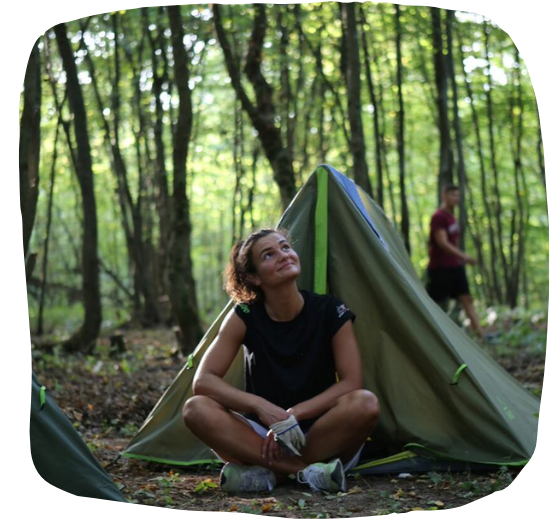When you’re going camping it is important to keep a checklist, if you don’t you might forget something as I have many times. Here I have provided you with the list that I have used in the past to decide what I need to bring.
I have listed these things under four different categories; shelter, resources, other essentials, and fun stuff. I hope you’re able to find everything you need on my list. If you don’t leave me a comment below.
I have given a brief description of all of the items that I’ve selected. If you want the list without item descriptions please scroll to the bottom.
Contents
Shelter:
My section on shelter is dedicated to items that are used in the actual setup of your hammock. Some of these you could choose to go without but you should at least consider them or how to make do without them. Here are the things that I have found to be important for your shelter:
1. Hammock:
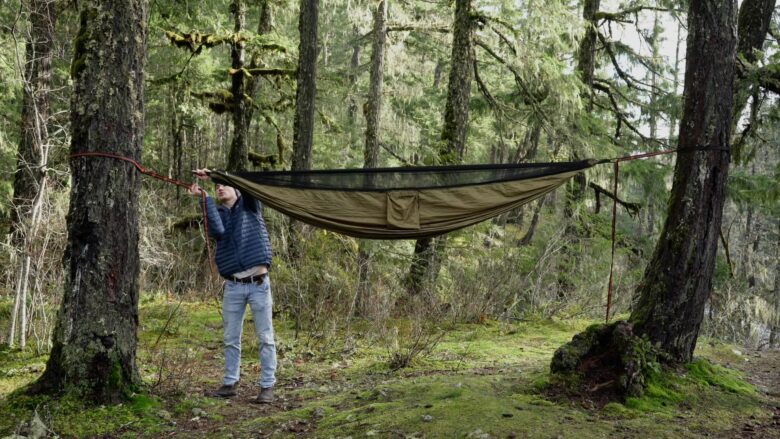
When you’ve made a point to go hammock camping, the hammock is the most important thing you have to bring. Technically you can’t go hammock camping without the hammock, that’s just called camping! Make sure that you at least bring a hammock but try to find one that is suitable for your trip.
2. Suspension:
Your suspension is definitely right up there with hammocks as far as importance in hammock camping. Technically you can set it up on the ground and still sleep in your hammock, however, I would call into question whether or not this is actually truly “hammock camping”.
When you are going camping in a hammock most of the time you are bringing straps. Some people use ropes and cords, however, we’ve advised people not to do that as it can be harmful to the trees. You can use straps to attach to the trees and then attach your cords to those straps; in the end, it’s really up to you. I’ve recommended you use tree-friendly straps that are 1 inch wide (or wider), they don’t necessarily have to be marketed as eco-friendly.
3. Carabiners:
We love carabiners! If you use them to attach your hammock to your suspension then you are absolutely going to need them. You can also use your carabiners for other things like attaching items to a line, then they’re just nice to have but not completely necessary.
If you don’t use carabiners at all, I recommend that you start. You can pick some plastic ones up just to use to hang things up on a line off the ground. It’s a good idea to hang things up so that you don’t lose anything; it also keeps your items dry.
4. Fly
Some hammocks, like Hennessy Hammocks, that are made for camping come with a fly; most parachute hammocks don’t. You can buy an aftermarket fly or use a tarp if yours didn’t come with one.
If you’re using a hammock that didn’t come with a fly and you didn’t think to bring one you are going to be in a pretty bad situation if it rains. It’s not only the rain that you’re worried about but also the morning dew can leave you wet and cold. it’s also nice to have the fly for shade on a hot summer day.
5. Ridgeline
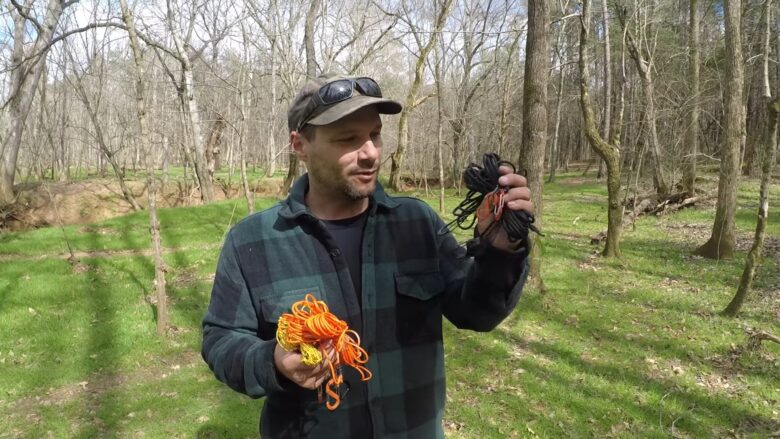
I’ve mentioned the ridgeline so much that it’s really getting old but it is an old-school fundamental that is starting to get lost among the rising popularity in portable hammocks. If you don’t know why you should use one read our post on it, to summarize, it’s good for hanging things but more importantly, it keeps your hammock sagging perfectly.
6. Bug Net
Just like I mentioned with the fly, most parachute hammocks do not come with an integrated bug net or any bug not at all for that matter. Again, hammocks made for camping like Hennessy Hammocks usually come with a bug net. A lot of companies like ENO make bug nets for their products and a lot of them have gotten a pretty good reception.
I don’t think we need to explain to you why you need a bug net (I already have… kind of). Save yourself the trouble and pick up a bug net if you don’t already have one.
7. Underquilt
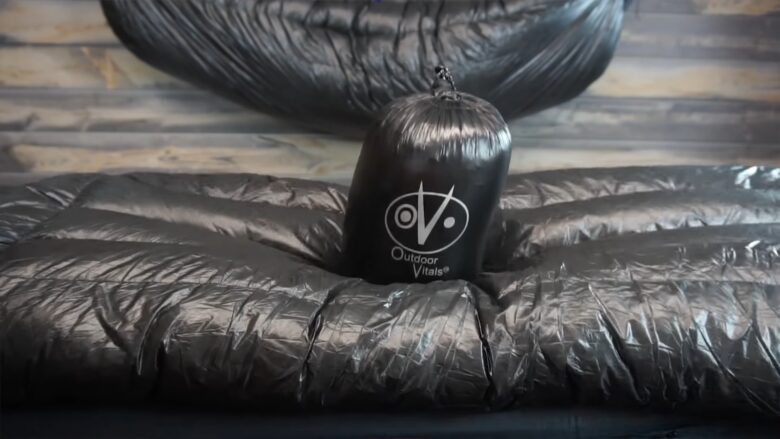
If you ever looked at buying an underquilt before then you would know how expensive they can be. This is an optional item most of the time, however, it can make a huge difference in the winter.
If you don’t know what an underquilt is then you are not alone. An underquilt is essentially the bottom half of a sleeping bag but for your hammock. You set it up so that your hammock sits in it, and just like that, your bottom will be toasty.
8. Top Quilt
One thing an underquilt doesn’t do is warm the top of you; a top quilt does that. If you don’t have a top quilt and you don’t want to shell out the money to get one you can just use a sleeping bag.
Most people prefer a top quilt because using a sleeping bag involves a lot of tossing and turning in order to get it feeling even close to right. One trick you can use to make a sleeping bag fit better is to only zip it up halfway.
Resources
In the resource category, I have listed resources that you have to manage wisely. For example; you cannot run out of a knife but you can run out of food. Here are the items that I have selected to list under resources;
1. Food
If you get carried away easily then food is something you can run out of if you get careless when you are camping. This is why it is so important to plan how you are going to manage your food. Make sure that you take into account how you will be cooking and how far you need to walk.
Meals aren’t the only thing that you need to plan. You should also make sure that you plan out when you are going to eat your snacks; you are going to want to make sure that you stick with it too. It would be awful to run out of snacks halfway through your trip. If you are able to run to the store then this doesn’t matter as much for you.
2. Water
Make sure that you have enough water to last you your whole trip or that you have a way to obtain and clean water you find while you are there. You should always make sure that your drink water that has been treated correctly.
You can treat water by boiling it, using chemicals, or using a filtration system such as a LifeStraw. We personally use chemical treatment in the form of dissolving tabs but we realize that’s not ideal for everyone. We highly, highly, recommend that you treat your water. I’ve been camping with people who have decided not to do this and later became sick.
3. Fuel

There are many types of fuel that you could take camping with; you could take gas for a stove, or perhaps wood to make a fire, whatever you do make sure that you had enough fuel to last you however long you need to use your flame for. If you plan to have a fire going after dark you are going to want to gather wood before darkness hits.
4. Ignition Source
When we say ignition source we mean something to light the fuel. In the case of a stove, this might just be an ignition button, however, you do not want to be without an ignition source that can start a fire more easily than that.
We recommend having a lighter in your pocket as well as a lighter and matches in a waterproof bag with your first aid kit. BIC lighters work fine but if you can invest in a lighter that can operate after getting wet or in the wind, this will be helpful in case you have to light a fire in the rain. We also think it is fun to bring along fire steel too.
Other Essentials
There are items that almost everybody considers essential and I’ve listed some of these items below. Remember, only you can decide what you are going to bring. If there is something that you notice is missing from this list let me know in the comments below
1. First Aid Kit
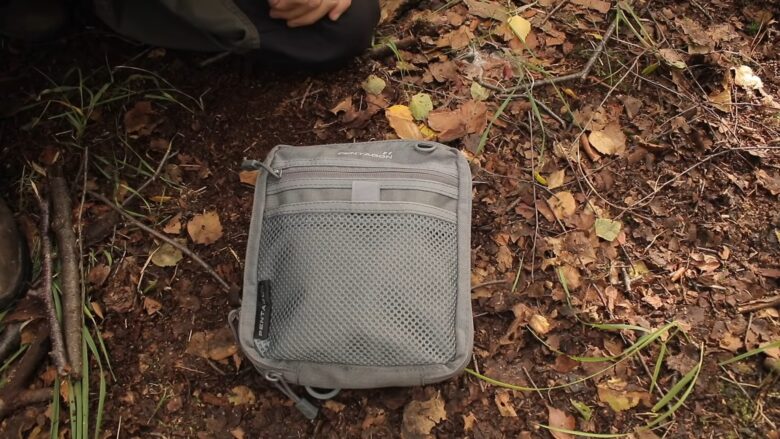
A first aid kit is really important not only for just camping but any time you go in the woods. You should have one that is suitable for whatever you’re planning on doing. If you’re camping for a week then your survival kit would look different than if you are going for a 15-minute jaunt in the woods.
Be careful not to take too many things that you don’t need. If you start doing this then your first aid kit could get super heavy and cumbersome to carry around. I’ve learned in wilderness first aid courses that there are a lot of things in the wilderness that you can use as impromptu first aid items; one example of this is using a piece of wood as a split.
2. Knife
It should be no surprise that bringing a knife is on my list. When I go camping I find myself using our knives constantly. Unless you just plan on using what you’ve got then you’re going to be in a lot of trouble if you didn’t bring one.
Without a knife, there are so many things that you won’t be able to do. I like to use my bigger knife for splitting bigger pieces of wood that I find on the ground, and often I use it to modify sticks to use as pegs for my fly guy lines. I use my smaller knives for things like preparing food, Cutting fabric, and cutting cords and twine.
3. Flashlight
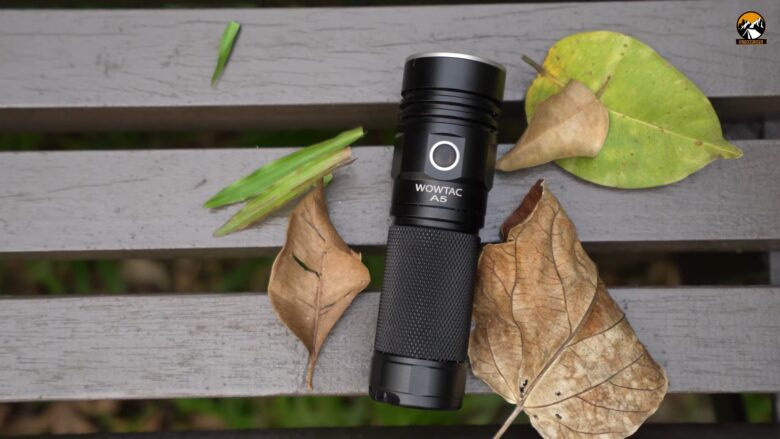
A flashlight is absolutely essential, even if you plan on going to sleep as the sunsets. We all know why a flashlight is useful; to see in the dark but having one is also a matter of safety. If you need to get up for an emergency at night you are going to need to be able to see.
Although a flashlight is really the only light that you absolutely need, I would suggest having a hands-free flashlight as well. Lights like headlamps make all the difference in the world when you’re trying to get something done quickly in the dark.
4. Clothing
I’ve suggested bringing a few different layers of clothing for different temperatures. The amount of clothing you bring really depends on what kind of trip you’re doing and what time of year it is. I have done portages where I have not been able to bring very many pieces of clothing. In these situations however I always make sure that I have something dry to wear around camp, and a raincoat.
I suggest putting a set of clothing to be dedicated as dry clothing into a ziplock bag inside a dry bag. If you’re wet on a cold night this pair of clothing could literally save your life if you were in the remote wilderness.
5. Sun Protection
There are two types of sun protection that I am about to recommend and I think you could already guess what they are; sunscreen and sunglasses. these two items can make such a difference in both your immediate situation and your long-term health.
When you are buying sunglasses I recommend that you make sure that they have proper UV protection. When you are buying sunscreen make sure it has the SPF that works for you. If you don’t know what kind of sunscreen you should be wearing I recommend SPF 30 because it seems to work for almost everyone.
6. Extra Cord
When you go camping bring some extra cord. This can be useful in so many applications around your camp, more often than not you will need to tie something at some point during a camping trip and you can use this cord to do it.
Some people wear bracelets made of paracord that unwrap into a longer more useful piece of cord. I wrote a post on why you shouldn’t use paracord in your hammock setup, however, it is useful for many other things. If you need a less stretchy cord look for something that is marketed as static, the ones I use are made of nylon.
7. Directional Tools

I used to recommend that people use a compass and a map but these days GPS seems to be the go-to. I still recommend bringing a map and compass just in case your GPS fails. When you are bringing these is important that you know how to use them and it isn’t really too hard to learn.
8. Communication Tools
Bring some communication tools with you when you go camping. You should bring something that you can use even if you can’t get a signal on anything else. Cell phones are good in most cases, however, if you’re going off the grid you should bring a satellite phone. You should also carry something that you can use to signal somebody at a distance whether it be a mirror or a flare. I always carry a whistle too.
9. Stove

I love to bring stoves, you can get them for a reasonable price and they can be pretty light and compact. I have come across situations where I’ve planned to have a fire and wasn’t able to, the stove really saved us and turned things around. If you ever get in this situation, a stove will save you from a miserable time.
10. Pot
Some people bring big pots, some people bring small pots, and some people even bring their whole kitchen set. Just make sure you bring something to cook in if you’re planning on cooking. If you’re just looking to cook for yourself, you can even get a personal size mug that you can cook in.
11. Dry Bag

I’ve recommended this before I will recommend it again, A dry sack is always a good option for something to bring. You can keep your extra clothes dry and it can also be used to keep your shoes dry overnight. There’s really no good reason not to bring a dry bag, especially because they aren’t all that expensive.
Fun Stuff
What fun would camping be if you don’t have any luxury items to make your time more relaxing or more fun. Here are some of the things that I’ve brought before. I haven’t gone into too much detail with these items as they’re all optional and you can bring whatever you’d like for fun and pleasure.
1. Bag Shower
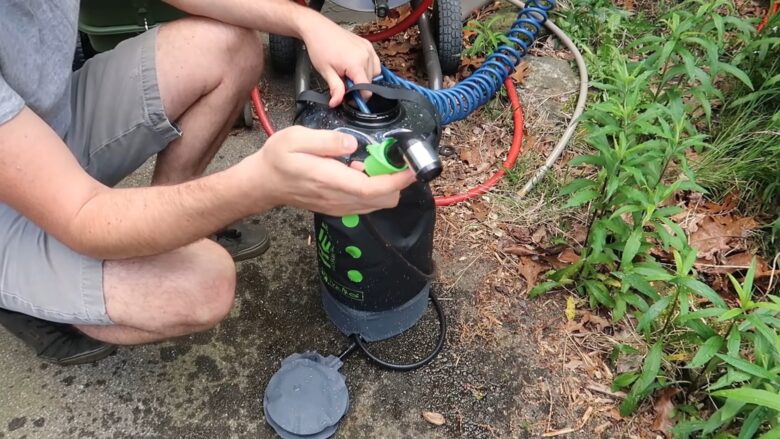
There are lots of different brands of hanging bag showers. Most of them are black and are heated by the sun during the day. All you have to do to have a warm shower is stand under them and open the valve to let the water flow.
2. Bluetooth Speaker
Not much needs to be said about why I like this item or what it does. I really recommend one that hangs. I also saw a cool one that was inside of a football once.
3. Games and Balls
I really recommend that you bring something to do especially if you have children. In the past, I’ve brought boards games, baseballs, and Nerf Guns among other things. If you didn’t bring anything don’t fret, you can still play games like flashlight tag and hide and seek without any equipment.
4. USB Charging Block
If you’re using your cell phone as a communication device, alarm, or music player, you are going to want to have a way to charge it. There are many cheap USB charging boxes that you can buy.
5. Instruments

Nothing beats a guitar at a campfire. Well, I’ve never actually seen bagpipes by a campfire but I’m sure that would be quite a scene. No matter what instrument you play people generally appreciate having musicians with them while they camp.
6. Fishing Rod
It’s super fun to catch and eat your own food, but we wouldn’t rely on this to survive. Consider bringing a fishing rod for a nice relaxing time.
7. Folding Lanterns

The last item on our list is USB lanterns. They’re super cool, they’re pretty lightweight, and some of them are solar charging; you don’t even need to use your USB to charge it. Having a soft light in the dark is a really nice touch to a campsite..
Finished!
That’s it, that’s my ultimate checklist. I no doubt missed something that some people consider part of the ultimate list for hammock camping. If you feel like I did then let me know in the comments below.
Here’s the list in case you just want to copy it. I’ve ommitted the fun items as you can bring whatever you want and you don’t even have to consider alternatives if you opt not to bring one of them.
- Hammock
- Suspension
- Carabiners
- Fly
- Ridgeline
- Bug Net
- Under Quilt
- Top Quilt
- Food
- Water
- Fuel
- Ignition Source
- First Aid Kit
- Knife
- Flashlight
- Clothing
- Sun Protection
- Extra Cord
- Directional Tools
- Communication Tools
- Stove
- Pot
- Dry Bag
- Bag Shower
- Bluetooth Speaker
- Games and Balls
- USB Charging Block
- Instruments
- Fishing Rod
- Folding Lanterns




